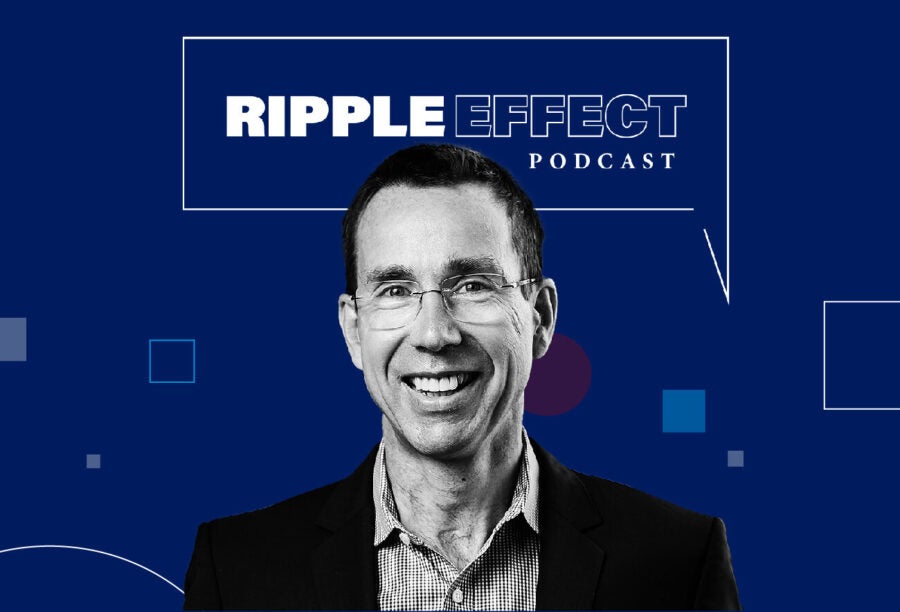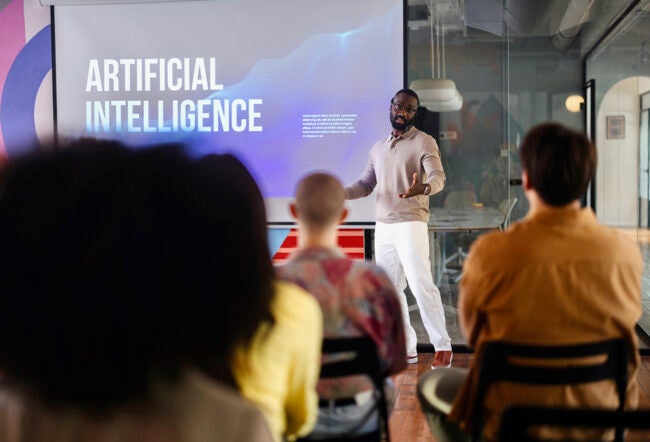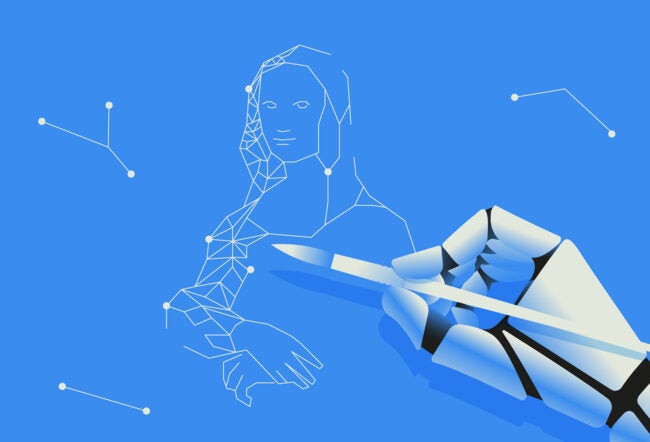As a new school year unfolds, Wharton’s Christian Terwiesch reflects on how AI is changing education. This episode is part of the “Back to School” series.
Transcript
How Are Students Using AI Right Now?
Dan Loney: It's a pleasure to be joined by Christian Terwiesch, who is a professor and co-director of the Mack Institute for Innovation Management here at the Wharton School. It's great to see you again. Thanks for your time.
Something that really came into your mindset in your teaching here at Wharton is that you started to see AI as a component that you needed to focus on.
Christian Terwiesch: Yes, absolutely. Many years ago, I had a background in computer science. I had a class on neural network, but I really put this topic to the side until Thanksgiving about two years ago. My kids were home from college, and like many other families in this country, we talked about ChatGPT. The topic came up, like, "Hey, Dad. You teach at the business school. Can ChatGPT take your final exam?"
So, what we did is we just took my final exam in Operations Management for the MBA students, put it into ChatGPT, and it did pretty well. We put the story online. It went viral, and ever since, people believe I know something about AI.
Loney: Did it surprise you that ChatGPT was able to do well on a Wharton exam?
Terwiesch: Absolutely. Not just that it did well. The way it answered the question, the level of sophistication of the language, the persuasiveness, the smoothness of the writing -- it just blew my mind.
Loney: How has that changed your thought process in how you teach, how you give exams?
Terwiesch: The first reaction is, "Wow! This is big. This is a major productivity boost." Before we talk more about teaching, let's digress a little bit in what it means to have a productivity boost. We're going to see productivity boosts in many industries, for doctors, for nurses, for lawyers, for accountants, for radio hosts, for business school teachers. We're all going to get more productive, but what does it mean to be more productive?
Take a barber shop, right? I have a technology that makes a barber twice as productive. What does that mean? The barber can either make haircuts that look twice as good, or they can take twice as many paying customers who get a haircut. I'm shifting what we call the cost/quality frontier. The cost/quality frontier has shifted out, and I can do now more with less. What does that mean for teaching? Well, I can either teach more students, or I can hold the number of students I'm teaching constant and provide a better job.
Loney: What do you think it's going to mean most for students in terms of their education moving forward?
Terwiesch: I think you have to distinguish between two types of use cases. There is a use case for the students who'll get the same education as before, they just get it in a more efficient and, thus, cheaper way. I remember many years ago, you and I talked about massive open online learning. I taught one of the first MOOCs (massive open online course) here at Wharton. It was all about taking the Wharton experience and making it cheaper.
Now the other use case, and that's the one I think we should be more bullish about, is we do a better job, right? The haircut looks twice as good. We have to ask ourselves in education, "What does it mean to provide education that is twice as exciting for the same number of students?"
Loney: Is there concern about students maybe not having the level of learning on specific topics because they're relying on AI?
Terwiesch: Absolutely, there is a concern. Just take a calculator as an example. When the calculator came out, when spellcheck came out, we were concerned, and I think rightfully concerned, that students would forget how to do basic calculations and that they would weaken on their spelling. It's like if you take a pilot, and the pilot is flying autopilot all the time, is the pilot at risk of forgetting how to fly an airplane? Probably.
Loney: We're already seeing those types of discussions form at this point. Colleges are obviously thinking about it. Even high schools and middle schools are thinking about how AI can be a tool to benefit the students' learning, but at the same time being careful about it.
How Will AI Change K-12 Education?
Terwiesch: Yes, let's table the exams for just a second. You mentioned colleges and K-12. I think there the impact is going to be very similar. The distinction that matters is, unfortunately, the rich and the poor. There are privileged universities and privileged private schools -- Wharton being one of them. The question is all about, "How can we take the students that we teach anyway and provide them with a better education?"
Now, I'm realistic about this. There are many situations in education where money is scarce. Think about public schooling in poor areas. And there the focus will be for the politicians about how to make education cheaper. Most of them boost the frontier. That's a good thing, but I wish there would be more people who would benefit in the way that we could benefit at Wharton.
Loney: In K-12, just having access to computers, and then having access to AI or ChatGPT as an assistant in doing research or doing a paper -- that's a significant hindrance in many parts of the country.
Terwiesch: I think most K-12 teachers I've talked to have the first reaction of, "This is going to be problematic." I think it's true. If you have basically your brother-in-law taking the exam for you, I'm sure that it's hindering the education process. And in a situation like ours, we are certifying a specific skill for somebody, and if that certification is now weakened by the fact that we're not sure whether the person has the skill or the technology has the skill, we have a problem.
Loney: I guess we shouldn't be surprised that is the reaction that we're seeing right now, because whenever a new technology comes on the board with great potential, there is a concern, a hesitancy.
Terwiesch: And it should be, right? Let's go back to calculators. You might still remember how to do 7x7. It's 49, if I'm not mistaken. You remember that. I remember that. But somebody who has grown up in the age of the calculator might say, "I don't have to know 7x7. I just ask the calculator." You cannot make the same argument for ChatGPT, where you say, "I don't know how to write an English essay, but ChatGPT can do it for me."
I think it really boils down to the question of what skills do we want to teach our kids, and what is the learning outcome that I want to have for my students in my course?
Loney: There's also the development of the ChatGPT itself, with the different versions we've seen come out, and how the technical side can improve what's available for use.
Terwiesch: I started using version 3.5 about a year-and-a-half, two years ago for my initial exam. That did pretty well already. And then with 4 coming out, and 4 Turbo, and now 4 Omni Channel, it just got better and better.
Loney: What are the discussions you've had with your students about the use of ChatGPT? What are the parameters?
Terwiesch: I'm like a harsh German guy, right? So, the rules are very simple. You're not allowed to use ChatGPT on the final exam. That's the first and most important rule. The second one is you can use it for case preparation and discussion. I've seen not too many students take advantage of that, but I expect the number to be growing, so I'm totally fine if you'll take the case, upload it into ChatGPT, and ask for advice. I think that's fair game. And then in class, we are typically not using it at all. Again, I think it works best when students prepare for the case one assignment in advance of class.
Loney: We're looking at a time where the leadership of the education sector -- whether it be colleges, universities, or school districts -- are going to have to have long conversations about what is allowable around AI.
Terwiesch: Yes, I wrote an op-ed on the question of what is allowable and not, and I think it's helpful to distinguish between three types of tests. There are the tests that you do to certify your skill, and for those, don't use ChatGPT. Then the second thing is what I oftentimes do as a teacher in class: I ask my students questions to just get a sense of how they've progressed on their learning journey. Again, using ChatGPT would be misleading.
The third type of test is really more like homework, which is hopefully engaging the students in the learning. For that, if I can use ChatGPT to increase that engagement, that would be a good thing. But always ask yourself, "Why are you testing?" Tests are not for the sake of testing. As an educator, you have to always think, "Why do I test?"
What Is the Future of AI in Education?
Loney: How much do you think ChatGPT has impacted your profession?
Terwiesch: I think we're just seeing the implications for the academic profession. I use it for idea generation oftentimes. I wrote a paper that shows how ChatGPT outperforms human beings at coming up with ideas for new products or services. That is something that somebody who teaches innovation cares a lot about. I use it for writing when I'm stuck with something. I say, "ChatGPT, continue that page for me." I think the key thing that you have to realize about ChatGPT is that it certainly makes mistakes, but there are situations where mistakes are not consequential.
If I'm asking you for 10 ideas, and five of them are bad, I still get five good ideas. If I ask it to do heart surgery for me, and five of those heart surgeries go wrong, that would be a disaster. So you want to use it in a relatively low-stakes environment, where you have a human in the loop, so that you make sure that the quality is ultimately where you want it to be -- because ultimately, it's your name on the paper.
Loney: Again, if you have that understanding that ChatGPT can be an assistant, be a guide in the process, but still that you have to do the double check, fall back and make sure that everything is proper and in working order, then it can be a benefit for good moving forward?
Terwiesch: Absolutely. If all we ended up with is a world where we were three or four years ago, we would have wasted a huge opportunity.
Loney: Where do you think we're going to go with AI in education longer term?
Terwiesch: I think it is going to increase access, first of all. There are many people living in the world -- that goes back to our MOOC discussion, when we started the MOOCs -- and many people in the world don't have access to an education like here at Wharton, and we can basically share and open the gates to those people. I think that's a good thing that is all about making things more efficient.
For the people who are at Wharton, I hope we can do a better job educating them. We can create some really awesome learning experiences. I know Ethan Mollick and the folks building simulations are already actively working on that. We can create real increases in the quality of their education, just like the barbershop is providing better looks to their clients.



